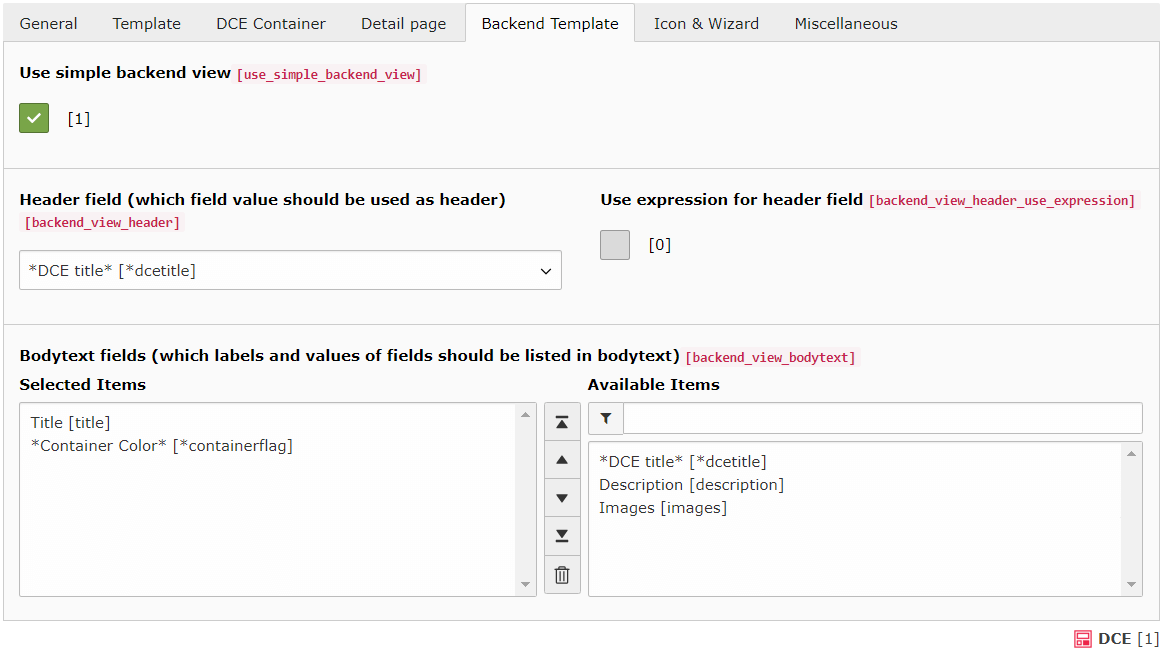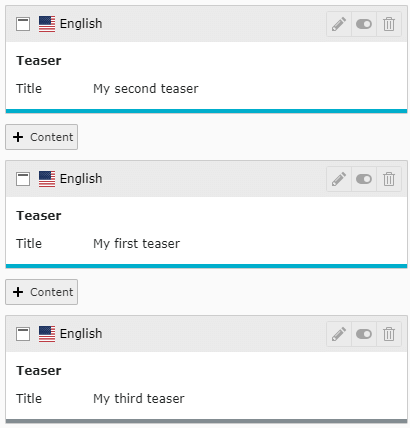Backend Template
Each DCE has not only a template for the frontend output, but also for the backend output. Without a backend template you will not be able to see differences in your content elements, in the page or list view.
DCE provides two ways to set up the backend template:
- Simple Backend View and
- Manual Backend Fluid template
Simple Backend View
The Simple Backend View allows you to define fields you want to display, just by clicking it.

This example looks like this in backend:

Expression for header field
Since DCE 2.7 you can enable a checkbox, which reveals an input field. There you can use Symfony Expressions to output more than one field in content element's header.
Tip
The header is also used as label (in list view and select dropdowns).

This header expression will - for example - generate the following header: Teaser: My second teaser
Note
On this page, you see how Symfony expressions in DCE work: DCE Expression Utility
PageTS configuration
You can make some adjustments here, using PageTS:
tx_dce.defaults {
simpleBackendView {
titleCropLength = 10
titleCropAppendix = ...
imageWidth = 50c
imageHeight = 50c
containerGroupColors {
10 = #0079BF
# ...
}
}
}Manual Backend Fluid Template
When you disable the Simple Backend View, you can enter (or reference to a file) a template using the "BackendTemplate" Fluid layout, which has two sections: header and bodytext
<f:layout name="BackendTemplate" />
<f:section name="header">
<strong>{dce.title}</strong><br>
</f:section>
<f:section name="bodytext">
Your backend template goes here...
</f:section>Note
Currently, it is not possible to access to DCE container info in manual backend template.
